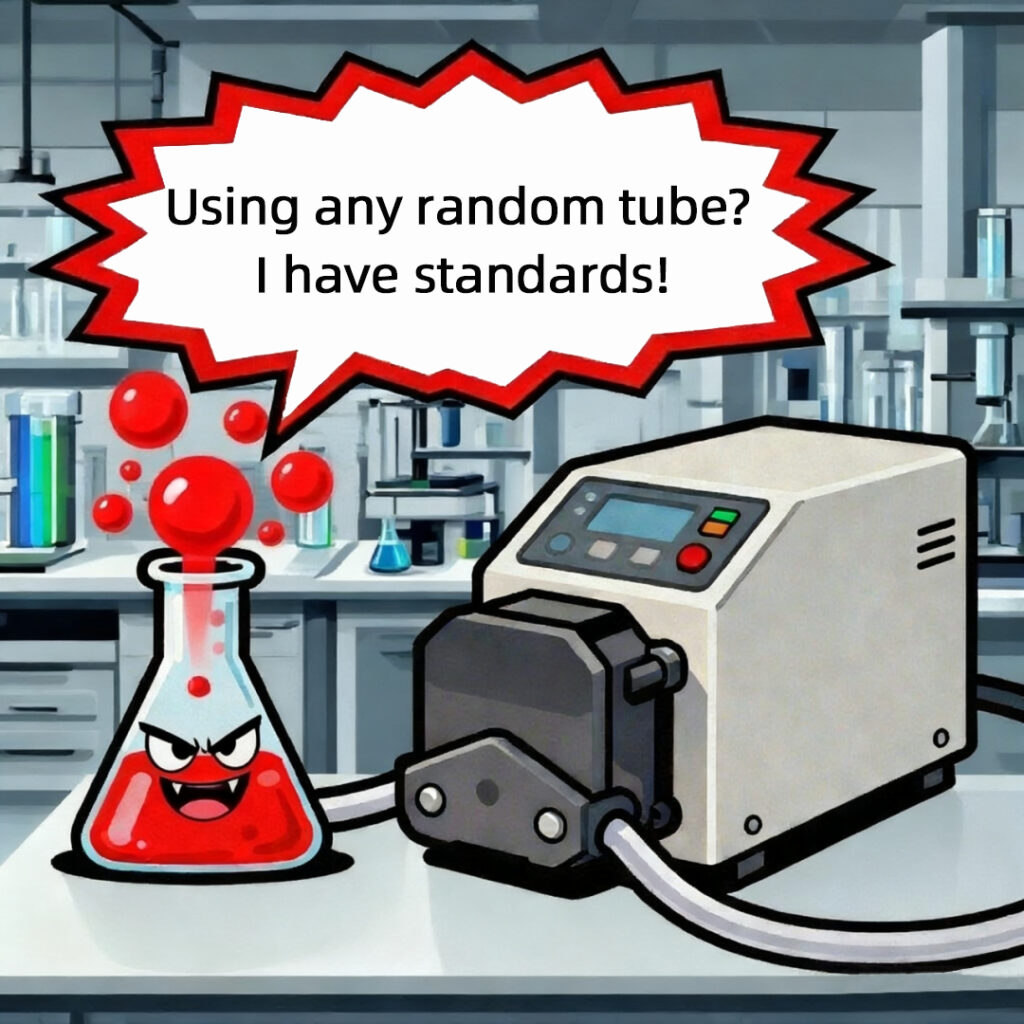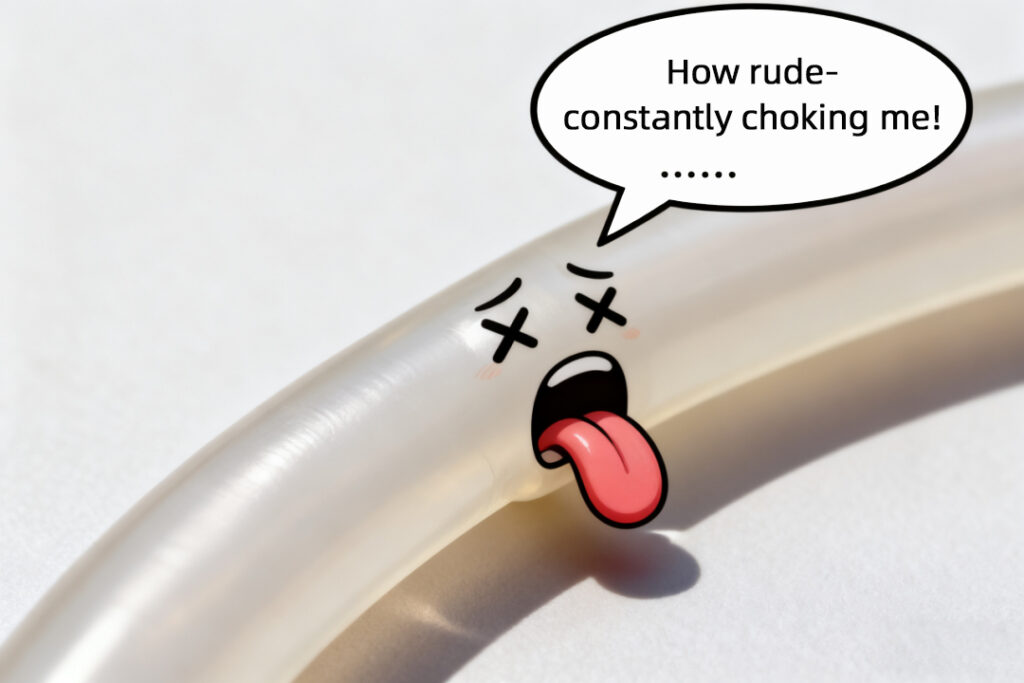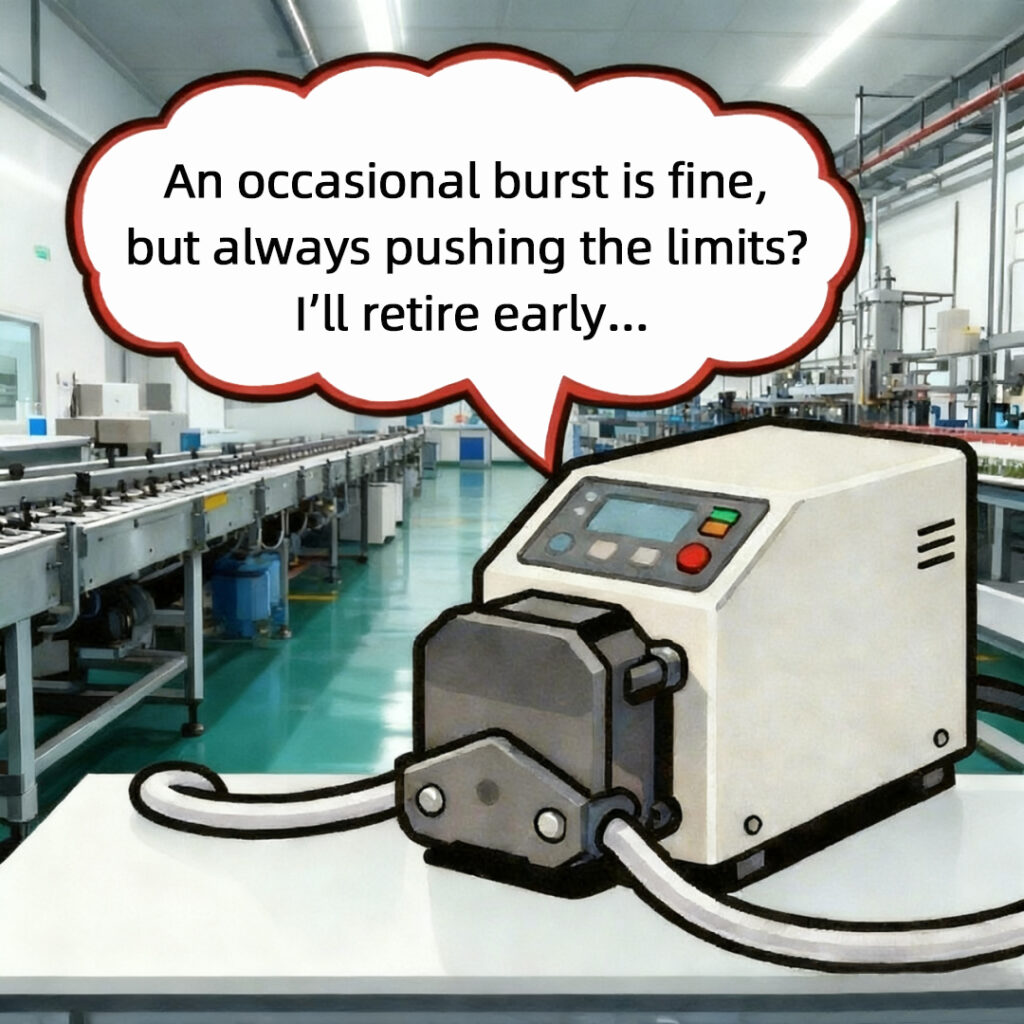Dear lab researchers and process experts,
Have you ever encountered situations like these:
Data fluctuating unpredictably?
Equipment acting up occasionally?
Before blaming the devices, consider this—sometimes the issue lies with your own operation!
Your handling might have left your peristaltic pump “full of grievances.”
Today, the “Peristaltic Pump” has decided to speak up and share the grievances it has endured over the years!
Let’s see how many of these resonate with you.
Tube
The drive unit is built to last, but I’m not!

01 Mismatched Pairings
“Why am I forced to handle every chemical liquid without discrimination?”
Pitfall: Tube swells, becomes brittle, or cracks, leading to leaks, contamination, or even safety incidents.
Best Practice: Stick to safety guidelines! Always select tubing based on chemical compatibility charts. Unsure? Consult Lead Fluid’s sales managers directly!
02 Wrong Size, Forced Fit
“If the size doesn’t match, why force it? I can’t rotate properly, and I definitely can’t suction!“
Pitfall: Pump head jams, flow accuracy plummets, and tubing wears out rapidly.
Best Practice: Precision matching! Always use tube of the specified size for your pump head model.
03 Sloppy Installation
“Twisting me like a pretzel or stretching me taut—have you considered how I feel?“
Pitfall: Tube lifespan drastically shortens, and connections are prone to leaks.
Best Practice: Install properly! Lay tubing straight along the pump groove, avoid twisting or bending, and ensure the length is just right.
04 Overextended Service
“Using the same tube until it falls apart? Do you think I’m made of steel?”
Pitfall: Fatigue-induced tube cracks, liquid splashing, interrupted experiments, and massive cleanup efforts.
Best Practice: Preventive maintenance! Regularly inspect tube. If you notice wear, hardening, or discoloration, replace the tubing or adjust its position immediately.
Pro Tip:
Mark the start date on your tube! This simple step helps you maintain a replacement log—the easiest and most cost-effective preventive maintenance trick.
Pump Head
“You apply Herculean force, and I’m under immense pressure!”

01 Excessive Squeezing
“Installing tubing shouldn’t feel like an arm-wrestling match!”
Pitfall: Over-compressed tube shortens its lifespan and compromises flow accuracy.
Best Practice: Apply precise pressure! Adjust the compression force based on tube size, ensuring the pressure block “fits snugly without crushing.” For spring-loaded pump heads, automatic compensation reduces human error, but regularly check if the spring rebounds properly.
02 Neglecting Cleanliness
“Covered in dust and grime—I have an image to maintain too!”
Pitfall: Dust or residual liquid accumulates inside the pump head, causing rollers to jam or produce unusual noises.
Best Practice: Regular maintenance! Clean the pump head when replacing tube. For multi-channel pump heads, check each roller for smooth operation. A little cleaning goes a long way in ensuring stability.
Drive
“Running at full speed all the time—even a workhorse would complain on my behalf!”

“What’s this? Fast & Furious 12?”
❌ Wrong Approach: Cranking the speed to the maximum for “peak efficiency.”
⚠Pitfall: Motor overheats and triggers protection, components age faster, tube wear multiplies, and overall system lifespan shortens.
✔Best Practice: Set speeds rationally based on process needs. Occasional high speeds are acceptable, but for normal operation, keep it within 30–70% of the rated range.
Pro Tip:
Need high flow? Use larger tube—don’t rely solely on high speed!
Follow the “Go Big, Not Fast” principle: When high flow is required, opt for larger-diameter tubing instead of maxing out the speed. This balances efficiency and equipment longevity.
After reading these “blood-and-tear complaints” from peristaltic pumps, did you smile knowingly or feel a sting of recognition?
Behind these grievances lies their sincere desire to perform at their best and serve you longer in your work.
Remember: Operate correctly and maintain properly!
If you have any questions about peristaltic pump usage, feel free to consult Lead Fluid!
Share your fun lab equipment stories in the comments!
Lead Fluid—Understanding Fluids, Understanding Your Needs!
